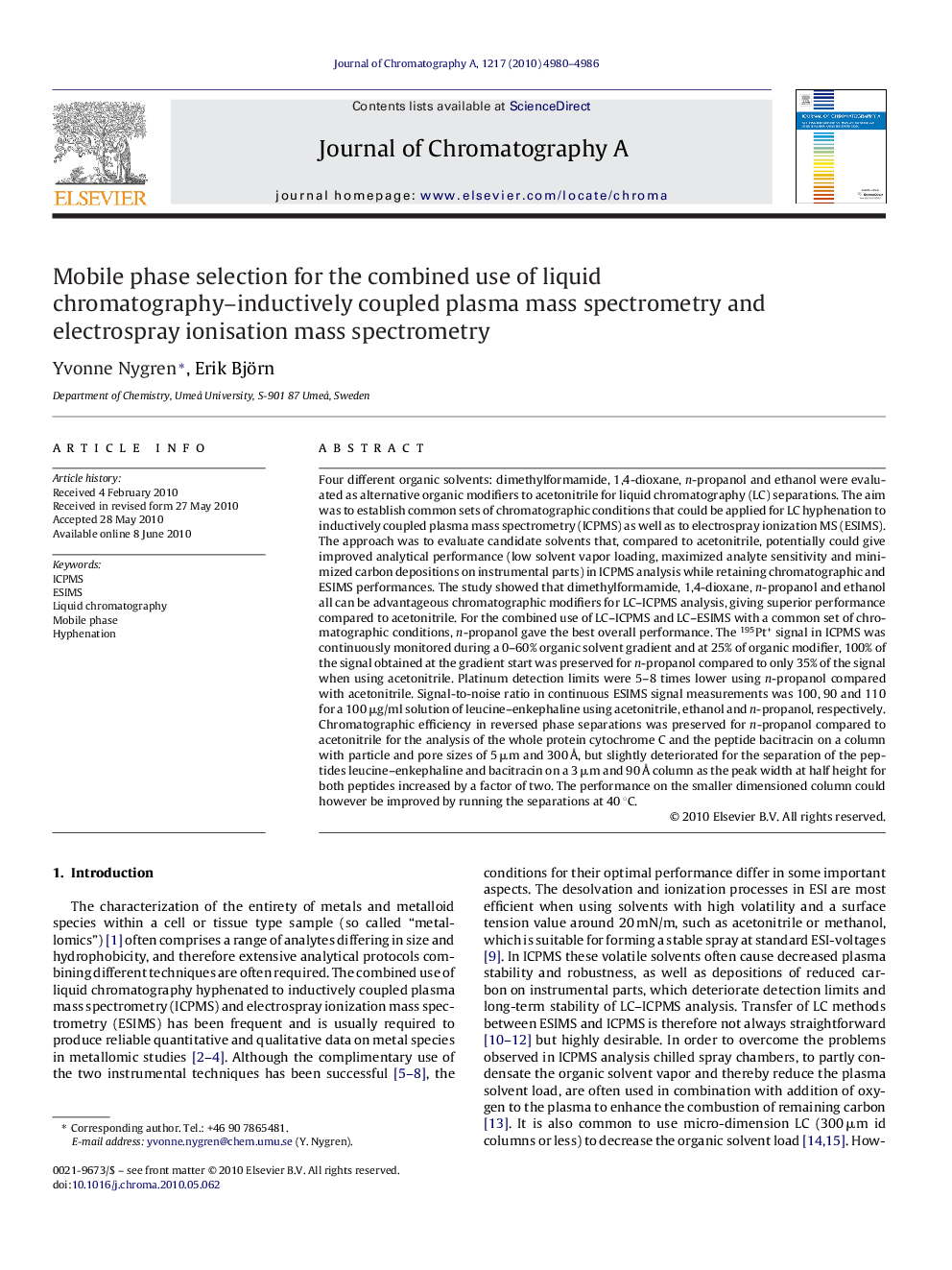| کد مقاله | کد نشریه | سال انتشار | مقاله انگلیسی | نسخه تمام متن |
|---|---|---|---|---|
| 1208881 | 965321 | 2010 | 7 صفحه PDF | دانلود رایگان |

Four different organic solvents: dimethylformamide, 1,4-dioxane, n-propanol and ethanol were evaluated as alternative organic modifiers to acetonitrile for liquid chromatography (LC) separations. The aim was to establish common sets of chromatographic conditions that could be applied for LC hyphenation to inductively coupled plasma mass spectrometry (ICPMS) as well as to electrospray ionization MS (ESIMS). The approach was to evaluate candidate solvents that, compared to acetonitrile, potentially could give improved analytical performance (low solvent vapor loading, maximized analyte sensitivity and minimized carbon depositions on instrumental parts) in ICPMS analysis while retaining chromatographic and ESIMS performances. The study showed that dimethylformamide, 1,4-dioxane, n-propanol and ethanol all can be advantageous chromatographic modifiers for LC–ICPMS analysis, giving superior performance compared to acetonitrile. For the combined use of LC–ICPMS and LC–ESIMS with a common set of chromatographic conditions, n-propanol gave the best overall performance. The 195Pt+ signal in ICPMS was continuously monitored during a 0–60% organic solvent gradient and at 25% of organic modifier, 100% of the signal obtained at the gradient start was preserved for n-propanol compared to only 35% of the signal when using acetonitrile. Platinum detection limits were 5–8 times lower using n-propanol compared with acetonitrile. Signal-to-noise ratio in continuous ESIMS signal measurements was 100, 90 and 110 for a 100 μg/ml solution of leucine–enkephaline using acetonitrile, ethanol and n-propanol, respectively. Chromatographic efficiency in reversed phase separations was preserved for n-propanol compared to acetonitrile for the analysis of the whole protein cytochrome C and the peptide bacitracin on a column with particle and pore sizes of 5 μm and 300 Å, but slightly deteriorated for the separation of the peptides leucine–enkephaline and bacitracin on a 3 μm and 90 Å column as the peak width at half height for both peptides increased by a factor of two. The performance on the smaller dimensioned column could however be improved by running the separations at 40 °C.
Journal: Journal of Chromatography A - Volume 1217, Issue 30, 23 July 2010, Pages 4980–4986